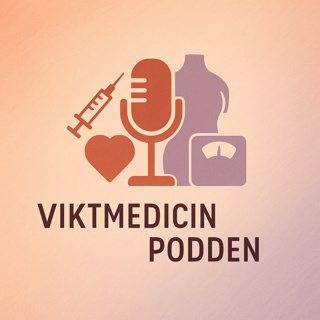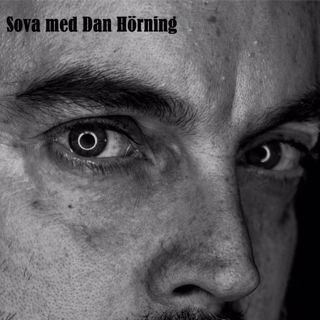
NEVER Cook With This Again
Seed oils are often labeled “heart healthy,” but what's the truth? The average person consumes vegetable seed oil daily, not just as a cooking oil, but on their food. Discover the truth about seed oils and why you’ll want to eliminate them from your diet today. Recommended Olive Oil Link: https://sanmicheleorganic.com Video on GRAS: ▶️ • Guess Which Percent Of Chemicals in Your Food Are Self-Certified and Not FDA Approved? Vegetable oils do not come from vegetables. Vegetable seed oils are highly processed oils that are processed with high heat and chemical solvents. When heat is added to refined oils, toxic byproducts like trans fats are created. Seed oils are genetically modified, so they often contain traces of glyphosate. BHA is a toxic byproduct found in seed oils and is classified as a possible human carcinogen. Other toxic byproducts can affect the immune system, nervous system, and liver. All chronic diseases involve inflammation. Vegetable oils are the most inflammatory thing that you can consume. They create damage at the cellular level and are often stored in the fat cells because they can’t be used for fuel. It takes a year and a half to detoxify seed oils from the membranes in our bodies. Soy, corn, sunflower, canola, and cottonseed are the most common seed oils. Cottonseed oil is the worst seed oil as it produces the most toxicity and has the most omega-6 fatty acids. Cottonseed oil is highly inflammatory and is often hidden in animal feed. Any time you have inflammation, you also have a lack of oxygen. Cancer thrives in an area that’s inflamed or doesn’t have oxygen. Inflammation from seed oils can also contribute to insulin resistance. Do not use vegetable oils at all! Replace seed oils with the following healthy cooking oils: •Extra virgin olive oil •Coconut oil •Butter •Ghee •Red palm oil •Tallow •Lard Mayo contains seed oils, so look for one without, like Chosen Mayo, which is made with avocado oil. It's best to avoid deep-fried foods. An air fryer can simulate fried foods, and crushed pork rinds rather than wheat products can be used as breading.
1 Feb 8min

The MOST Toxic Ingredients You Should NEVER Eat
DOWNLOAD THE FREE APP HERE: https://bit.ly/40VwGR9 Currently available for IOS Ready to change your health for the better? Ditch junk food for good. Download my FREE app and start using the Junk Food Meter to scan barcodes and instantly reveal the hidden dangers in processed foods! With just one scan, you’ll see the percentage of sugar, starch, and seed oils lurking in your food. These are the 3 deadly ingredients in ultra-processed junk foods—and my app helps you quickly identify and avoid them. You'll be surprised at how many “healthy” foods are actually loaded with these harmful ingredients! Don’t be fooled by "zero sugar" labels. Starch is basically hidden sugar, and it’s just as harmful to your body. Most junk foods are packed with toxic ingredients like rancid seed oils, processed starches, and artificial chemicals—yet they lack the essential nutrients your body craves. Did you know the average person consumes over 100 pounds of modified food starches every year? it’s in everything from baby formula to pet food—and it's a huge part of a teenager’s diet. It's time to take control and make smarter food choices! Junk foods are “dead” foods. They’ve been stripped of vital vitamins, minerals, and phytochemicals—and loaded with preservatives, coloring, and MSG. That’s not food; that’s just a bunch of chemicals your body doesn’t know what to do with. Download the app now, and let me know what you think.
31 Jan 5min

How to Remove Skin Tags and Warts Overnight
I’m going to show you how to get rid of skin tags overnight. This will not only get rid of skin tags and warts, but it will also prevent them from coming back! Discover the best home remedy for skin tags that makes skin tag removal at home a breeze. Today, I’m going to share two effective home remedies for skin tags and warts. A wart is caused by the HPV virus, while skin tags usually occur in areas of friction. High insulin can increase one's susceptibility to skin tags. People with diabetes, overweight people, and women with PCOS are at a higher risk of developing them. When you produce too much insulin over a period of time, you can develop insulin resistance. Too much insulin is caused by eating too many carbs or frequent eating. Insulin resistance makes it difficult to absorb glucose. Over time, this deprives your brain cells of fuel, leading to memory problems, concentration problems, and early dementia. The solution is to give your body an alternative fuel source, such as ketones, fatty acids, and protein. To do this, lower your carbs and do intermittent fasting. This will lower insulin and prevent growths like skin tags and warts. A virus that comes out of remission can create warts if your immune system is compromised. Sufficient vitamin D can support the immune system and put these viruses back in remission. Take 10,000 IU of vitamin D daily, especially in winter. Povidone iodine is an excellent remedy for skin tags. It has potent antiviral and antimicrobial properties, so it’s also good for warts. Iodine dissolves the protein in the skin tag and acts as a dehydrator. Garlic contains allicin, a powerful antiviral compound effective against warts. Because it’s often difficult to differentiate between warts and skin tags, add garlic to ensure your remedy is effective. Crush one clove of garlic and combine one drop of garlic with one drop of iodine. Apply the mixture to your wart or skin tag and cover it with a band-aid. Repeat this every day until your skin tag or wart is gone.
27 Jan 7min

The #1 Vitamin Depleting Food in the World
Find out why refined starches are the #1 vitamin-depleting food in the world. In this podcast, I’ll explain the critical role of vitamin B1 in the metabolism of refined starches. Learn to spot the signs of a vitamin B1 deficiency before they wreak havoc on your life! Refined starches include rice flour, tapioca flour, corn flour, modified corn starch, maltodextrin, and modified food starch. Certain nutrients are required to metabolize refined starch and turn it into energy. Vitamin B1 (thiamine) is vital to this process. Refined starches are much higher on the glycemic index (GI) than sugar—this scale tells you how fast a food can raise blood sugar. Sugar is a 74 on the GI, while refined starches like maltodextrin are 180! Vitamin B1 is not stored in the body in large amounts, so consuming refined starches can quickly cause you to become deficient. Symptoms of vitamin B1 deficiency include: •Fatigue •GI problems (slow digestion, bloating, constipation, nausea) •Low stomach acid •Low bile •Stress •Nervous tension •Insomnia •Frequent mood swings •Muscle twitches •Breathing problems Much of the refined starch broken down into glucose in the body can not be used as energy, so it’s converted into lactic acid. This decreases oxygen in the body and makes it more acidic, which can cause hyperventilation and restless legs syndrome. Along with diet, the following factors can also contribute to vitamin B1 deficiency: •Alcohol •Tea •Coffee •Raw fish •Gut issues •Metformin •Excessive exercise Meat, especially pork, is the best food source of vitamin B1. Liver, eggs, and sunflower seeds are also good sources. Refined grains are often fortified with synthetic B vitamins, which you should avoid. If you want to supplement vitamin B1, look for the natural form called allithiamine. Benfotiamine is also a good supplement form of vitamin B1. Magnesium is an important cofactor involved in turning starches into energy. If you don’t have enough magnesium, vitamin B1 won’t work. Magnesium helps control calcium in the body. Symptoms of low magnesium include: •Muscle spasms •Calcium buildup •Kidney stones •High blood pressure •Palpitations •High cortisol •Trouble sleeping •Tremors •Muscle weakness •Migraines Magnesium glycinate is the most absorbable form of magnesium! More videos on vitamin B1: ▶️ • Vitamin B1 (Thiamine) Deficiency Sign... ▶️ • Vitamin B1 (Thiamine) Deficiency: The... ▶️ • Vitamin B1 and SUGAR Experiment: WARNING ▶️ • Benfotiamine (Fat-Soluble B1): Benefi...
26 Jan 7min

Why Are We Doing This to Our Kids?
Why are we feeding our kids ultra-processed foods? In 1948, the childhood obesity rate was less than 1%, and food allergies, asthma, and autism were virtually non-existent. Discover the detrimental health consequences of the ultra-processed food diet in this podcast. When my father was a child in 1948, he recalls a different way of life. Sugary cereals like Fruit Loops, Captain Crunch, and Fruity Pebbles did not line the aisles of the grocery store. Children did not have mid-morning snacks at school and were told not to spoil their appetites by eating before dinner. Saturated fats were not demonized as they are today. Lard and tallow were found in every kitchen, and red meat was a dietary staple. Most people had gardens and relied on the skill of canning to get them through the winter. Obesity and chronic disease in childhood were uncommon, while childhood obesity, food allergies, asthma, and autism plague the children of today! The largest category of ultra-processed foods are snack foods. The problem with snacking is that you spike insulin every time you eat. Carbohydrates create the most significant spike in insulin. Not only are we snacking, but we’re snacking on the worst foods! The pancreas is constantly working to pump out insulin to remove sugar from the blood. This eventually leads to insulin resistance, which is behind almost every chronic illness, including a fatty liver, high blood pressure, diabetes, obesity, inflammatory diseases, mood disorders, dementia, and more. In 1948, we did not have not have ultra-processed food calories. Today, 65% of the teenage diet comes from ultra-processed food calories. This number is around 50% for adults and 45% for toddlers. Seed oils, such as soy, corn, cottonseed, and canola, are the worst ultra-processed food ingredients. Around 25% to 30% of all our calories come from seed oils. Grain-based starches generate 220 billion dollars per year! Highly processed industrial starches such as modified food starch, modified cornstarch, and maltodextrin spike blood sugar—often higher than consuming sugar does!
25 Jan 8min

Why Can't I Talk About This?
Did you know there are forbidden topics on YouTube? Find out about the connection between high amounts of vitamin D and autoimmune diseases, as well as some of the other topics I can’t talk about on YouTube! Dr. Bruce Hollis Full Interview: • Your Body Is BEGGING For Vitamin D!! Today, I’m going to share some fascinating data on autoimmune diseases. First, let’s examine some before-and-after images of people who used high doses of vitamin D for autoimmune diseases. Dr. Bruce Hollis explains that there are many studies on the positive benefits of vitamin D, but many of them have been discarded and are not included in the literature. If many people with autoimmune diseases see their problem go into remission with vitamin D, does this mean the conditions are related to vitamin D deficiency? There has been a massive spike in autoimmune diseases; they now surpass cancer and heart disease. It is currently our top health problem. Could the cause be related to glyphosate or genetics? Let’s take a look. Autoimmune disease occurs when the immune system attacks one's own tissues, creating inflammation. Specific genes can make us more susceptible to autoimmune diseases, but because of heightened immune surveillance, they also have protective factors against viruses and parasites. “Vaccines and Autoimmunity” presents data about specific vaccines and the autoimmune diseases they might trigger. For example, the vaccine for Lyme disease can trigger arthritis in hamsters genetically susceptible to arthritis. In 1950, 5 vaccines were given to children. Today, children receive over 30 vaccines. The CDC recommends 69 doses of 16 vaccines from birth to age 18 months. Could these vaccines overstimulate an already fragile immune system? Is it possible to overdo it? If you have to take a vaccine, taking vitamin D could be a good idea to add some protection.
24 Jan 7min

The #1 Early Sign of Dementia
Surprisingly, one of the earliest signs of dementia involves the retina. There is a high correlation between problems in the retina and problems in the brain. Problems with night vision or central vision, floaters, and light sensitivity issues are the earliest signs of dementia. Some people develop amyloid-beta plaquing on the retina and may experience problems differentiating shades of grey and other colors. Researchers have found high levels of microbes, typically found in the mouth, in the brains of Alzheimer’s patients. When people die from dementia, it’s usually caused by an infection such as a UTI or lung infection. For some people, surgery can be too much on the body and lead to death. Some people with dementia have a slow, progressive degeneration of the brain to the point they’re bedridden and stop eating and drinking, which ultimately leads to death. Focus on cleaning your brain and reducing inflammation for dementia prevention. The glymphatic system cleans the brain, mainly at night, which is one of the primary purposes of sleep. This system removes malformed proteins and plaquing and rejuvenates the brain. Anything that inhibits sleeping may increase your risk for Alzheimer’s, heart attacks, strokes, cancer, blood sugar issues, and type 2 diabetes. Sleep apnea can also be problematic. You need 8 to 9 hours of sleep! Alcohol significantly interferes with REM sleep and is very damaging to brain health. To prevent Alzheimer’s, you must flood the brain with oxygen. Exercise is one of the best ways to do this! Exercise stimulates the growth of brain cells and the hormone BDNF (brain-derived neurotrophic factor). Adequate sun exposure and high amounts of vitamin D can help support healthy sleep. A diet high in sugar and carbohydrates can starve your neurons. Brain cells love ketones! To get into ketosis, you must lower your carbohydrate intake. If you have any early signs of dementia, try taking ketones as a supplement or MCT oil. Niacin may also be helpful. Take 50 mg daily, slowly increasing to 500 mg per day. Amyloid Beta Plaquing Study: https://pubmed.ncbi.nlm.nih.gov/20550... Why We Sleep Book Link (Matthew Walker): https://www.amazon.com/Why-We-Sleep-U... DATA: https://www.sciencedirect.com/science... https://www.nia.nih.gov/news/changes-... https://alz-journals.onlinelibrary.wi... https://www.science.org/doi/10.1126/s...
20 Jan 6min

Teeth Whitening at Home
For around $3.00, you can have white teeth naturally with this teeth-whitening DIY recipe. In this video, I’ll show you how to whiten teeth at home using 2 ingredients. There is a safe and effective way to get white teeth at home! You don’t need to go to the dentist or purchase whitening strips for white teeth. Baking soda is nonabrasive and can be used to gently scrub your teeth to remove stains and plaque. You can combine baking soda with 3% hydrogen peroxide to whiten teeth at home. Combine 1 teaspoon of baking soda with 3 drops of 3% hydrogen peroxide and 8 drops of water. This mixture breaks the bonds of tooth stains, leaving you with whiter teeth. It’s also beneficial for eliminating bacteria and reducing plaque formation. Use a toothbrush to gently polish your teeth with this paste for 1 to 2 minutes. Rinse your mouth thoroughly when you’re finished. Do this 2 to 3 times per week for a few weeks for whiter teeth. Teeth whitening should be done gradually to avoid damaging the gums and tooth enamel. Oil pulling is an ancient practice that involves swishing oil in the mouth for 10 to 20 minutes. Coconut oil is great for oil pulling. It’s high in lauric acid, a potent anti-microbial that is effective against bacteria, fungus, and candida. It also helps with bad breath. Research has found oil pulling to be as effective as prescription mouthwash against gingivitis. Vitamin C and glucose compete in the body. Bleeding gums are often caused by low vitamin C. If you consume a lot of sugar, glucose will block your vitamin C, which will show up in your gums.
19 Jan 5min




















